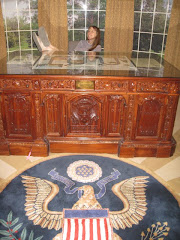Water is the most important thing to have in an emergency. (Okay, okay, it depends on the emergency. You can, however, only last so long without clean water to drink.) So, here are my suggestions for how to store it. I have sited sources used.
How to Store Water
Pre-Storage Treatments:
No additional household bleach is needed when water comes directly from a good pre-treated municipal water supply.
Add 8 drops (1/2 tsp.) household bleach (5.25% sodium hypochlorite) per gallon of water if the water is clear and not chlorinated. *See Disinfection below.
Add 16 drops (1 tsp.) of bleach per gallon if water is cloudy.
Water Storage Containers:
Plastic juice or soda bottles (made of PETE plastic) are the best. They should be thoroughly cleaned and rinsed prior to use. Don’t use milk jugs, as they degrade.
Food Grade heavy plastic buckets or drums. (NEVER use containers that have held chemicals, bleach, or other non-food items.)
Protect water storage containers from light and heat. Algae can grow if water is exposed to light. Store in areas where leakage will not cause damage to the home. Rotate water every 6 months.
Emergency Outdoor Water Sources:
*rainwater *ponds and lakes *natural springs *streams and rivers
Note: NEVER use flood water. Avoid water with floating material, an odor or dark color. Only use saltwater if you first distill it.
Filter out organic material and silt first by using a clean cloth or coffee filter and funnel.
Pre-Use Treatments
If the water isn’t pure, use a combination of methods below:
Filtration: There are many good water filters on the market. Get one with activated carbon elements which help remove some chemical elements. Look for a filter system that has a pre-filter before the micro-filter. Micro-filter should be removable or field cleanable. Some models also add chemicals to kill bacteria. Do your homework.
Disinfection: You can use household bleach to kill microorganisms. Use only regular household liquid bleach that contains 5.25% sodium hypochlorite. Don’t use scented bleaches, color safe bleaches or bleaches with added cleaners.
Method: Add 16 drops of bleach per gallon of water, stir and let stand 30 mn. If water doesn’t have a slight bleach odor, repeat the dosage and let stand another 15 mn.
*The only agent used to treat water should be liquid bleach. Other chemicals such as iodine or water treatment products sold in camping stores that don’t contain 5.25% sodium hypochlorite as the only active ingredient aren’t recommended and shouldn’t be used.
Boiling: Boil water for 3-5 minutes plus 1 additional minute for every 1,000 feet in elevation.
Distilling: While the aforementioned methods kill most microbes, distillation will remove microbes, heavy metals, salt and most other chemicals. Distillation involves boiling water and then collecting the vapor that condenses back to water.
To distill, fill a pot halfway with water. Tie a cup to the handle on the pot’s lid so that the cup will hang right side up when the lid is upside down (make sure the cup isn’t hanging into the water) and boil for 20 mn. The water that drips from the lid into the cup is distilled. You may also buy distillation equipment, but it is expensive. Also, distillation is a slow process.
*Water can go flat with storage and after boiling. Aerate it by pouring the water back and forth between two containers.
*Hide that bleachy taste with a powdered drink mix.
*Do you know the location of your incoming water valve? You’ll need to shut it off in an emergency to stop contaminated water from entering your home in the event of broken water or sewage lines.
*To use the water in your pipes, let air into the plumbing by turning on the faucet at the highest level in your house. A small amount of water will trickle out. Then obtain water from the lowest faucet in the house.
*To use the water in your hot water tank, be sure the electricity or gas is off, and open the drain at the bottom of the tank. Start the water flowing by turning off the water intake valve and turning on a hot water faucet. Don’t turn on the gas or electricity when the tank is empty.
*If supplies run low, never ration water. Drink the amount you need today, and try to find more for tomorrow. You can minimize the amount of water you need by reducing activity and staying cool.
Sources: FEMA, providentliving.org, Red Cross
“Preparing for Disaster.” Developed by the American Red Cross and the Department of Homeland Security, Federal Emergency Management Agency.
http://www.providentliving.org/content/display/0,11666,2246-1-1125-1,00.html
Get your free FEMA disaster preparedness book, “Are You Ready?” 1-800-480-2520
Subscribe to:
Post Comments (Atom)








No comments:
Post a Comment